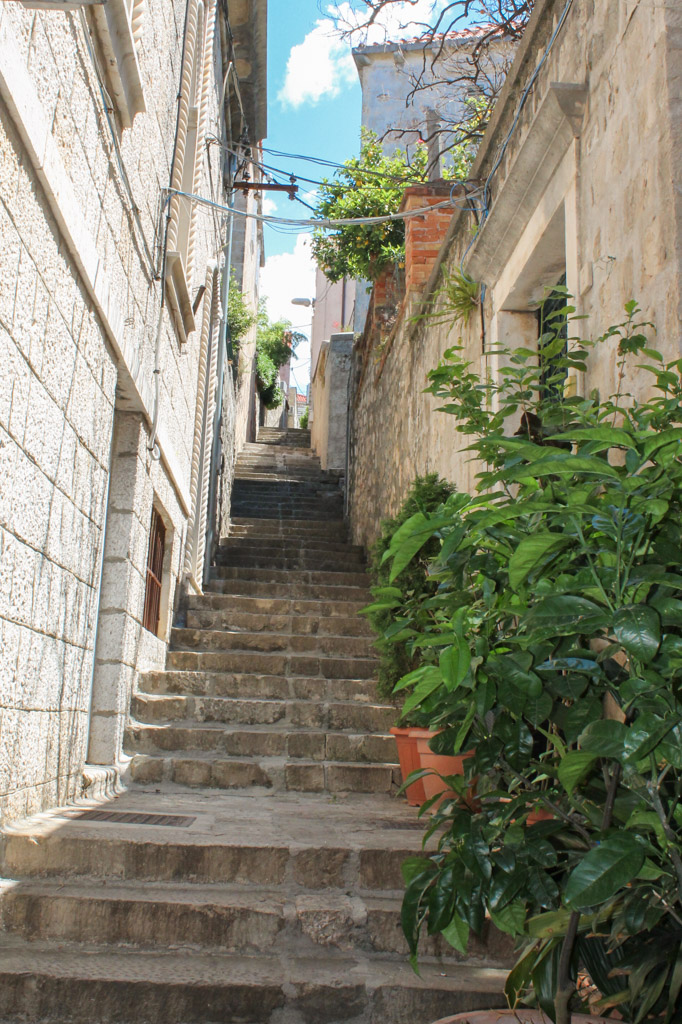Cavtat, Charming Resort on the Dubrovnik riviera
The town of Cavtat is a popular seaside resort located on the Dubrovnik Riviera.
This little town of 2000 inhabitants has always lured tourists and visitors for its cultural heritage, the beauty of its traditional architecture, as well as its laid-back seaside atmosphere.
Situated just a stone’s throw away from Dubrovnik (20 km), Cavtat makes a perfect getaway if you’re planning to spend your vacation in Dubrovnik.
On the other hand, with plentiful hotels and holiday rentals, it’s an ideal place to consider for your stay if you want to be close, yet away from the hustle and bustle of the city.
A short history of Cavtat
Perched on the small peninsula of Rat, the old town of Cavtat hides a rich history, going back to ancient Roman times.
On the same place of today’s old part of Cavtat was situated the Roman colony called Epidaurus. It was first mentioned in 47 B.C., in the context of the wars between the Roman generals Ceasar and Pompey.
The Roman colony of Epidaurum would be destroyed and abandoned at the beginning of the 7th century following the arrival of Slavic and Avaric tribes to the region.
Subsequently, the Roman refugees from the destroyed Epidaurus would found a new city—Ragusa (today’s Dubrovnik).
The ancient Roman city of Epidaurus will remain in ruins and uninhabited till Medieval times when, on the same site, rises a new settlement named Cavtat. According to one of the theories, the name Cavtat derives from Latin „Civitas Vecchia” —old town, as Cavtat was referred to by the citizens of Dubrovnik.
Getting there
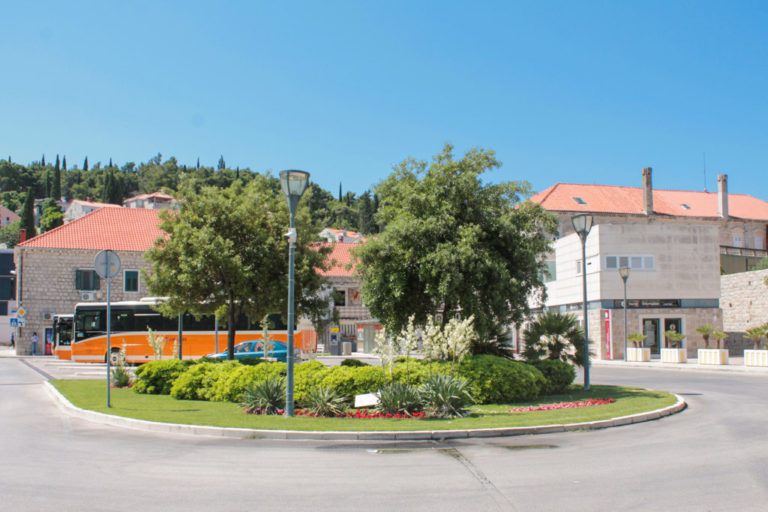
View of the bus terminal and info center in Cavtat
Cavtat is quite easy to reach. There are several ways of getting there: by public transport, boat, or car.
The public bus line number 10, which operates daily between Dubrovnik and Cavtat, will get you a step away from Cavtat’s center. You just need to exit at the bus terminal once you get there. Public buses are operated by Dubrovnik public bus company Libertas, and you can check their schedule here.
At the bus terminal building, you’ll find an info center, where you can get complimentary brochures, maps, and info about Cavtat and its sights. At the same building, you’ll find public (paying!) toilets.
If you decide to go by car, it’s good to know that there is a big paying parking lot just next to the bus terminal.
If you love boat rides, you can get to Cavtat by sea. There are a couple of private boat companies operating daily between Cavtat and Dubrovnik in the summer season (April/May through October, weather permitting). You can get more info on their schedule in the old port of Dubrovnik.
Things to do and see in Cavtat
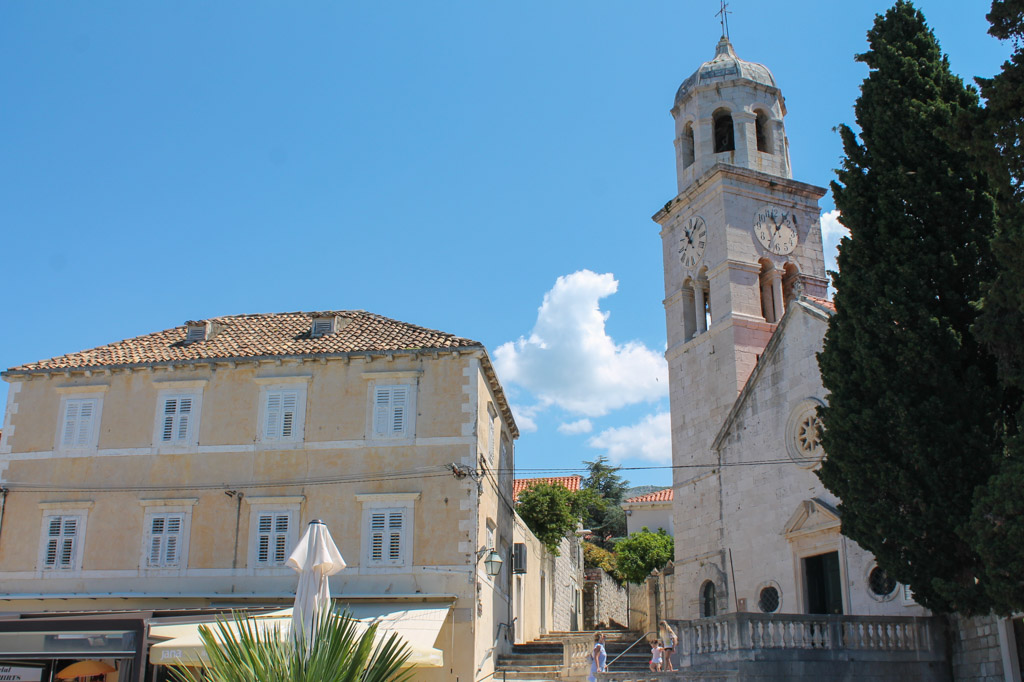
View of the parish church of Saint Nicholas in Cavtat center
If you want to start your visit by sightseeing, you can start by visiting the baroque parish Church of Saint Nicholas, dating from the 18th century. Just next to it, discover the old Rector’s palace, the seat of the former Cavtat’s governors, which displays over 35000 items from the collection of Baltazar Bogisic, the famous Cavtat born collector and laywer.
You can continue by visiting the birth house of Vlaho Bukovac, one of the most famous Croatian painters, from the turn of the 19th century.
On the other end of the palm tree embellished waterfront promenade, you’ll find the Franciscan Monastery from the 15th century, with a beautiful adjacent church of Our Lady of the Snows.
The church harbors a couple of precious works of art, like the 16th-century altarpiece ( by Mihajlo Hamzic) belonging to Dubrovnik Renaissance school of art, and a beautiful painting of Our Lady of Cavtat, a work by Vlaho Bukovac.
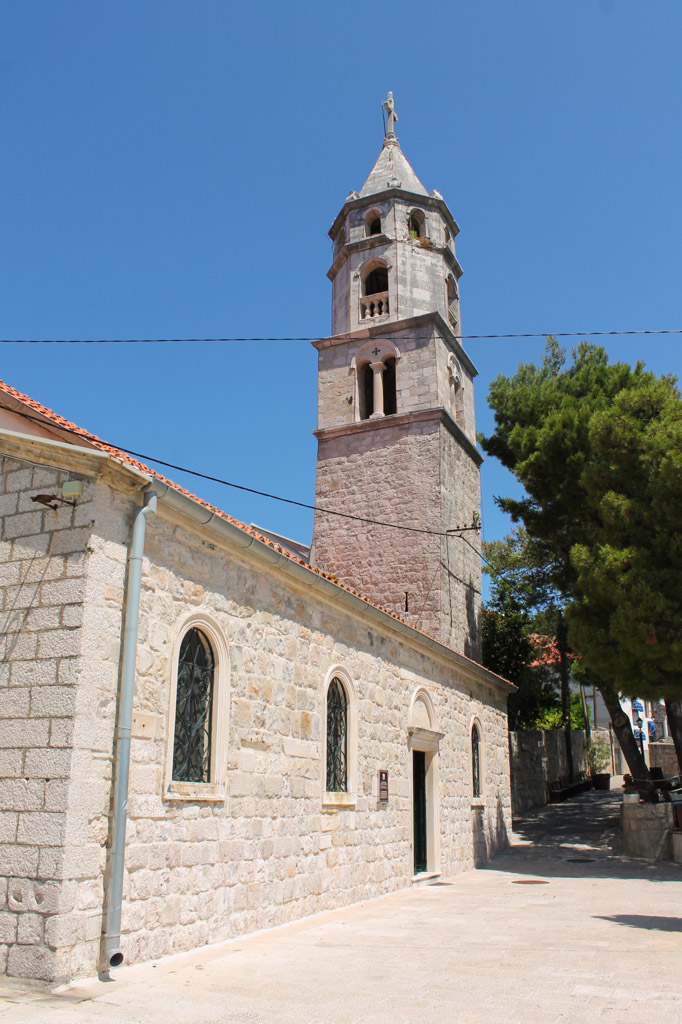
The Franciscan Church of our Lady of the Snows in Cavtat
Once you exit from the church turn left and follow the signs to get to the town’s highest point, the top of a small hill overlooking Cavtat. In the distance, you’ll recognize the stunning silhouette of the old town of Dubrovnik.
The location is called Saint Roch’s, and it’s the site of a local cemetery. There, you’ll find Cavtat’s most famous monument, the mausoleum of family Račić, a work of the most famous Croatian sculptor Ivan Mestrovic from Split.
The mausoleum was built for the rich ship owner’s family Račić in 1922, and the famous white lime(stone) from the quarries of Brač Island was used for its construction.
If you get tired or hungry from all the sightseeing, refresh yourself at one of the cafes at the waterfront promenade, or try some Dalmatian delicacies at one of Cavtat’s restaurants.
If you visit Cavtat in high season (June through September), and weather permitting, take a dip into the clear blue Adriatic sea at one of Cavtat’s pebble or rocky beaches, situated around the peninsula of Rat.
There are also a couple of concrete beach areas, with chairs and umbrellas at your disposal. There, you’ll find ladders to get into the water.
If you don’t mind walking, grab an ice cream, and head for a beautiful promenade around the peninsula of Rat. Start from the Franciscan monastery, and enjoy the nature and lovely sea views during this most enjoyable 30-minute walk, which ends right where you began your visit—at the bust terminal.
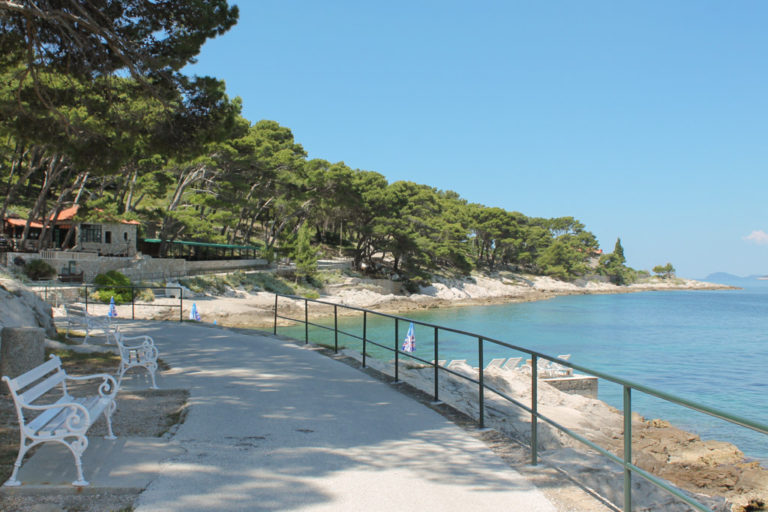
A beautiful promenade around the peninsula of Rat


